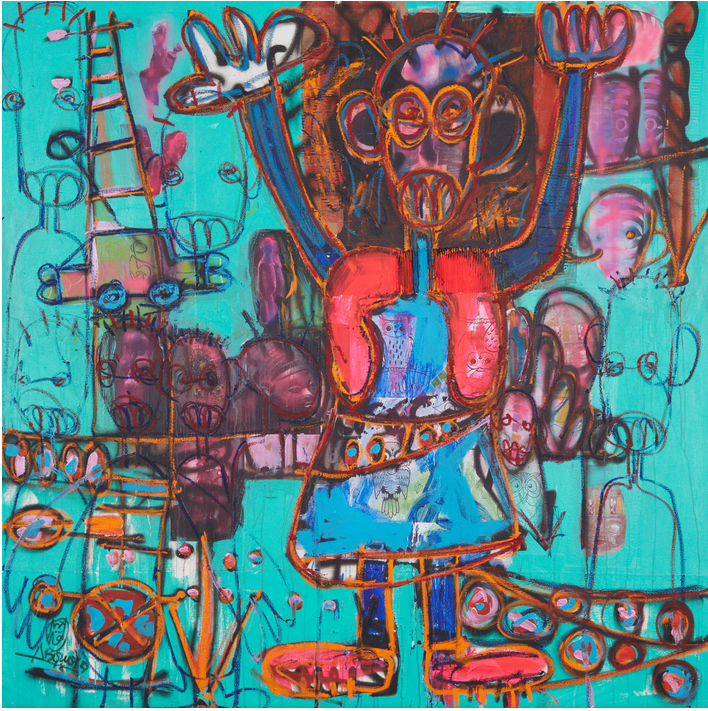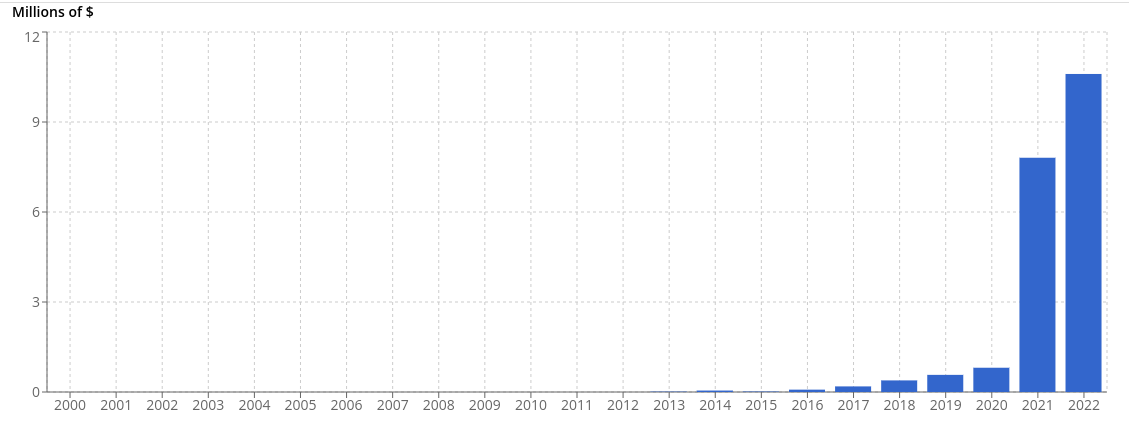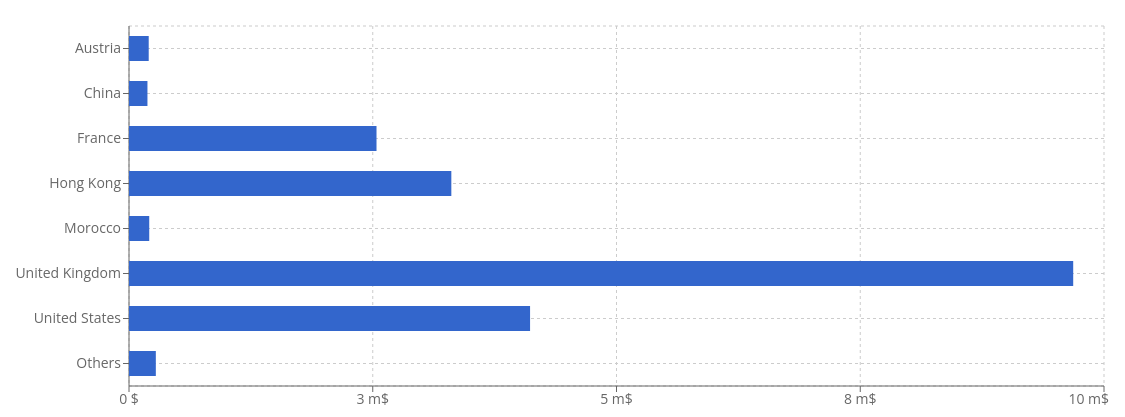Hyper-inflation on African artists: e.g. Aboudia
[2022年10月25日]The young African scene has become one of the art market’s strongest growth levers. Aboudia Diarrassouba is one of the latest signatures to attract a rush of international collectors.
In the past five years, the global art auction market has flung its doors open to African artists, and, after a particularly ‘urgent’ inflation, works by the talents who were recognized when this phenomenon began are now trading at price levels in line with those of works by the young stars of European and American art. In fact, on the whole, the African art market is so tight that almost everything sells. It has to be said that the ‘consecration’ of African and African-diaspora artists by the international art market happened very quickly, as if to repair an ‘omission’… and the auction houses played a key role in the speed of their emergence along with a number of speculators attracted by a potential source of rapid and substantial profits.

Aboudia: Haut les mains (Hands up), 2020. Sold for GBP 378,000 at Christie’s London (9 Mar 2022).
A crescendo of sales…
Many African artists are posting 100% success rates at auction: Amoako Boafo, Toyin Ojih Odutola, Ismail Isshaq, Oluwole Omofemi, Godwin Champs Namuyimba, Kwesi Botchway, Alioune Diagne, Foster Sakyiamah… to name just some. Remember, a sales rate of 100% is an exceptional phenomenon on the art market, compared to a global average ratio of 62%, (all creative periods and all nationalities combined).
Aboudia Abdoulaye DIARRASSOUBA (aka ‘Aboudia’), aged 41, has rapidly become one of the favorites of collectors around the world. His paintings are snapped up in Marrakech, London, Paris, New York and even as far as Hong Kong and Beijing. Demand is so strong that the prices of his works have increased tenfold in just ten years, and half of his canvases have fetched over $50,000 at auction, with some of his largest works reaching $500,000 and beyond!
Aboudia: annual results (copyright Artprice.com)

Crossing borders
How did this artist with Ivory Coast origins – who lives and works between Brooklyn and Abidjan – so quickly conquer the hearts of art collectors around the world, and why do his works attract such high bids? We go back a few years to understand the market mechanics of Aboudia’s emergence.
Aboudia was born in 1983 in Abengourou, a small town in Côte d’Ivoire located 200 kilometers from the country’s financial capital, Abidjan. Interested in art from an early age, he was 15 when he won a competition entitled “Draw me your dream”. Emboldened by this approval, he decided to pursue his dream and study art, despite his father’s firm opposition. Left to his own devices and faced with financial difficulties, he enrolled at the School of Applied Arts in Bingerville in 2003 to improve his skills in mural painting. In 2005, he graduated from the Institute of Arts in Abidjan.
The following years were difficult, as he was unable to get a favorable response from the galleries. But he nevertheless continued creating with tremendous energy despite very close proximity with the violence of the second period of civil unrest which broke out in March 2011 between Laurent Gbagbo’s supporters and supporters of the newly elected president, Alassane Ouattara. After witnessing a carnage near his studio, Aboudia sublimated his terror and produced 21 large-scale canvases, representing human bodies scattered among guns, skulls, razed buildings. The evocative power of his images on the nature of the conflicts in Côte d’Ivoire was so strong it was used by Western media to cover the war. This is how his work was first seen abroad.
Aboudia: geographic distribution (copyright Artprice.com)

After “Pangea”
Quickly spotted by the British gallery Jack Bell, he had a first solo show in London in 2011 where his work was described as having Basquiat’s vitality, Goya’s dark force, the urgency of Twombly and Dubuffet’s quest for authenticity. Three years later, in 2014, Aboudia made his debut in the United States with a show at the Ethan Cohen Gallery in New York. 2014 marked a turning point in the young painter’s career with works also included in the collective exhibition “Pangea: New Art from Africa and Latin America” at the Saatchi Gallery in London, and Aboudia’s work began to be purchased by some of the most renowned international art collectors.
And it was also at that time that his auction prices began to take off. In May 2014, during the Pangea show, Bonhams sold one of his paintings (I remember when all this was trees) in London for $16,000, twice the price reached the previous year by the artist’s auction debut at the same auction house. Thereafter, demand rocketed and Diarrassouba was the subject of increasing attention, exposure and commercial opportunities. Numerous auction houses joined the bandwagon: in France with Millon, Piasa, Artcurial, Cornette de Saint-Cyr; in London, Christie’s and Sotheby’s joined Bonhams in offering his works as of 2017. In 2018, Aboudia’s work was included in a highly popular sale: New Now, organized by Phillips in New York. His signature was now at the heart of the sales that were most followed by international collectors of Contemporary art, and his prices were rising year after year.
In 2018, Bonhams sold a work for $42,000; the following year, Piasa sold a set of drawings for nearly $79,000; in 2020, Sotheby’s fetched $99,000 for a large canvas; in March 2021 Christie’s reached $223,000, a new price threshold that was subsequently repeated in the following months. A year later Christie’s had already doubled level with nearly $500,000 obtained for Haut les mains (Hands up) in March 2022. Most recently, in July 2022, one of his untitled canvases (2018) fetched $607,000.
Today, faced with the strong demand and soaring prices, several early buyers of his works have flipped, pocketing substantial gains… perhaps to re-invest in other young artists still unknown to the international art scene.




 0
0
